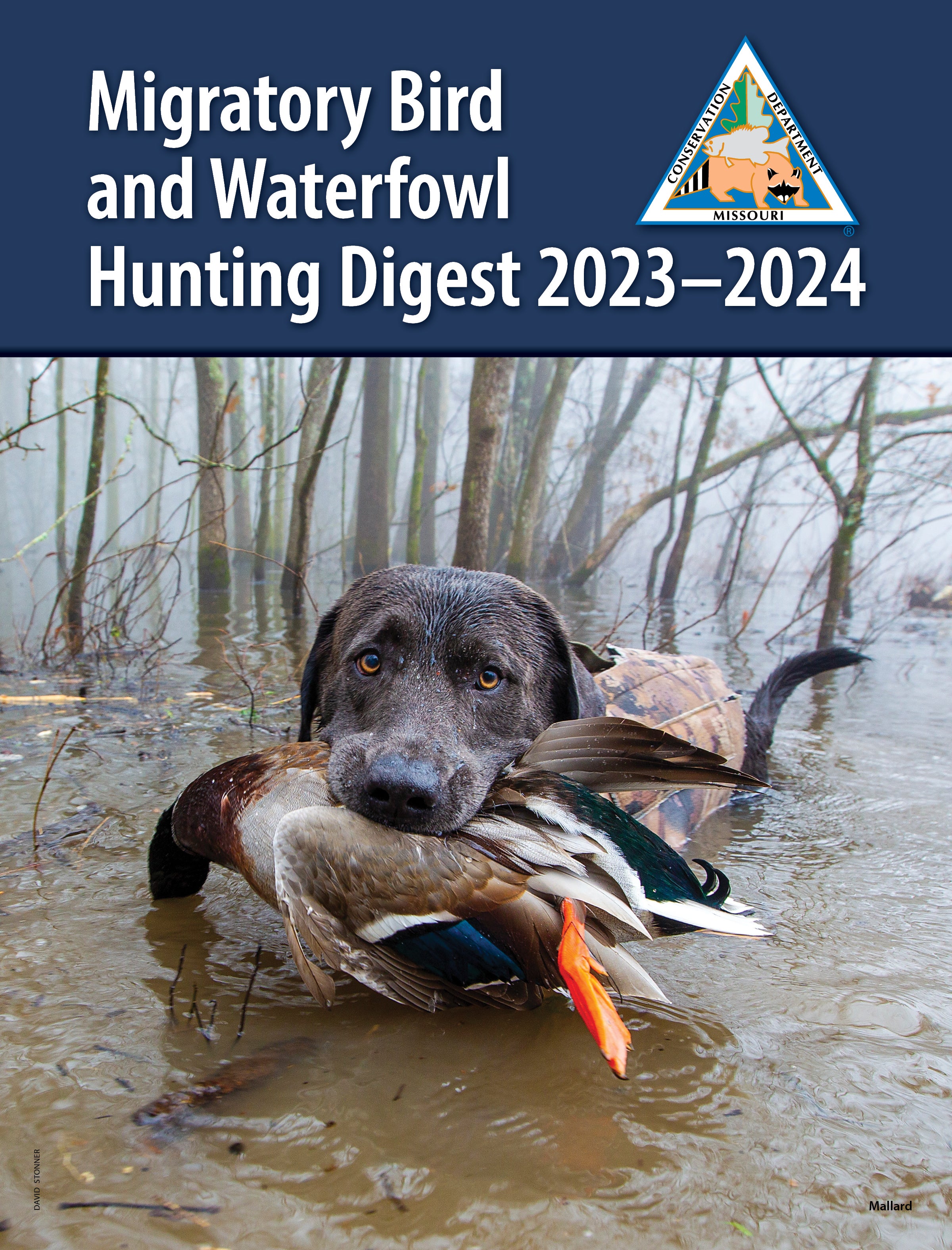About Doves
Missouri is home to three species of dove that are legal to harvest during the state’s dove hunting season.
Mourning doves are the most common species found statewide, but hunters may also encounter white-winged doves or Eurasian collared-doves.
White-winged doves are common to southwest states and Mexico.
Eurasian collared-doves have arrived in Missouri recently and are increasingly common, especially in urban areas and grain-handling facilities.
Mourning doves can be found throughout the state and are often abundant, using both wild and planted food sources. Doves are sensitive to hunting pressure and weather, which can create a situation where doves are abundant one day and gone the next.

Getting Started
Dove hunting is as simple as finding a location where doves are congregating and feeding. Harvested wheat stubble or corn silage fields, ponds with exposed banks and weed cover, and harvested sunflower fields are all excellent locations to target.
Dove-Hunting Gear
- Shotgun and plenty of shells (#7½ or #8 shot)
- Camouflage clothing or blind material for concealment
- Bucket or shooting stool to sit on
- Eye and ear protection (recommended)
Preparation
- Scout the field a day or two before the season opens and observe how the doves enter and use the field.
- Set up along a flight path in a spot that offers concealment but still allows you to see incoming birds.
- Decoys, including motion wing decoys, may coax birds in closer.
To find a conservation area near you, check out our dove map.
Tips and Tricks
Hunt Later in the Season
Hunters looking for a different dove hunting experience should consider hunts later in the season. While hunting pressure the first week often pushes doves off feeding fields, a lack of disturbance later in the season may encourage field use by later migrants. Late-season dove hunters often report having the area to themselves, and can experience good hunting when conditions are favorable.
Use a Shotgun with an Open Choke
Increase your chances of success by hunting with a shotgun that has an open choke.
- Cylinder and improved cylinder chokes are good choices as they create a wider shot pattern with an effective range of 30–35 yards.
- More constrictive chokes such as modified and full are better for long-range shots but require better accuracy at close range and will often result in having little usable meat left due to the tighter shot pattern.
About Eurasian Collared-Doves
If you think you may have recently seen or heard a dove that didn’t look or sound quite right, chances are you’ve encountered a Eurasian collared-dove. This species was introduced to the Bahamas from Europe and Asia in the 1970s. By the 1980s, it had made its way to Florida, and from there it has spread rapidly throughout much of the United States.
Eurasian collared-doves weigh 5-6 ounces, or about 15% more than their native mourning dove relatives. In addition to a stockier build, Eurasian collared-doves also have a squared tail tip rather than the pointed tail of a mourning dove. Their coloration is similar, though collared doves tend to have a lighter gray color than mourning doves. In addition, Eurasian collared-doves have a black crescent on the nape of their necks (hence the “collar” in their name), and broad white patches on the tail.
Like mourning doves, Eurasian collared-doves are agile fliers. Collared-doves are seed eaters and may visit the same feeding areas as other dove species, giving you an opportunity to compare the two species. Eurasian collared-doves are considered legal game in Missouri, and may be included as part of a combined daily harvest along with mourning doves and white-winged doves.
Dove Status Report and Research
Missouri’s 2018 roadside mourning dove survey showed a statewide decrease of 3% compared to 2017. However, hunters in the central, east central, and northeast parts of the state are likely to see numbers at or slightly above average, while hunters in north central and northwest Missouri may find slightly reduced dove numbers.
If you harvest a dove with a band on its lower leg, please report to 1-800-327-BAND or reportband.gov.
We just want the ID number — you keep the band!






















